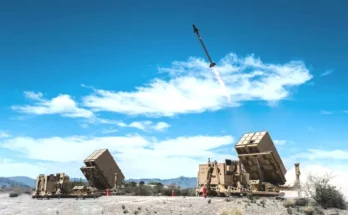The Senate Armed Services Committee completed its markup of the FY20 National Defense Authorization Act on May 23. The following are excerpts pulled from a committee press release. An executive summary of the legislation can be viewed here.
“U.S. Sens. Jim Inhofe (R-Okla.) and Jack Reed (D-R.I.), Chairman and Ranking Member of the Senate Armed Services Committee, today announced details of the committee’s markup of the National Defense Authorization Act for Fiscal Year 2020. During the subcommittee and full committee markups of the legislation, the Committee considered 433 amendments and adopted 298 amendments. The Senate Armed Services Committee voted overwhelmingly, 25-2, to advance this important legislation to the Senate floor.
“The NDAA supports a total of $750 billion in fiscal year 2020 funding for national defense, in line with the budget request and the NDS Commission report. Within this total, the legislation authorizes a base defense budget of $642.5 for the Department of Defense and $23.2 billion for national security programs within the Department of Energy. The NDAA also authorizes $75.9 billion for Overseas Contingency Operations. These totals reflect a transfer of $97.9 billion from the administration’s budget proposal for Overseas Contingency Operations “base” funding back to the base discretionary account.
“The National Defense Strategy asserts that the reemergence of great power competitors—namely China and Russia—is the central challenge to our long-term prosperity and security. As China becomes increasingly aggressive in the region and Russia continues to extend its destabilizing reach around the world, the NDAA includes key provisions that will strengthen our democratic institutions against foreign interference, reinforce our alliances and partnerships around the world, and address critical capabilities in our arsenal, including investing in 5G networks, maximizing munition production lines, and maintaining our nuclear deterrent. Specifically, the NDAA protects against Russian attempts to compromise the capabilities of the F-35 by prohibiting the F-35 or related equipment from going to Turkey unless it is certified that Turkey has not accepted delivery of Russia’s S-400 system.”
Shaun's deep-rooted interest in military equipment continues in his role as a senior defense analyst with a focus on the United States. He played an integral role in the development of Forecast International's U.S. Defense Budget Forecast, an interactive online product that tracks Pentagon acquisition programs throughout the congressional budget process. As editor of International Military Markets – North America, Shaun has cultivated a deep understanding of the vast defense markets in the United States and Canada. He is a regular contributor to Forecast International's Defense & Security Monitor blog and has co-authored white papers on global defense spending and various military programs.




